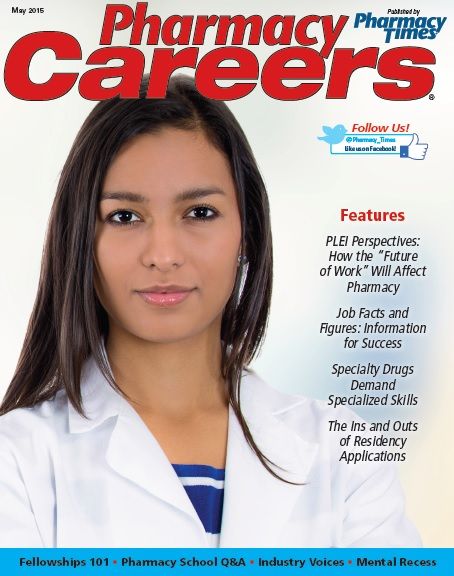The Ins and Outs of Residency Applications
As the demand for residency pharmacy programs grows, here are some tips on how to navigate the application process.

The pharmacy residency application process has changed substantially in recent years due to the evolution of the profession and the introduction of the Pharmacy Online Residency Centralized Application Service (PhORCAS), which allows applicants to complete a single application for multiple programs, ranking the programs to which they apply in order of preference.
As more practitioners and students recognize residency training as a requirement for many positions and national pharmacy societies encourage the use of residency-trained pharmacists for direct patient care, the demand for programs has increased annually to a point where the number of residency candidates exceeds the number of available positions.1-3 Since 2009, the annually reported results of the American Society of Health-System Pharmacists’ (ASHP) Resident Matching Program, also called the Match, show more applicants withdrawing from the program due to a lack of interview offers or acceptable programs to rank but that a greater number of programs were ranked per applicant.4
Through PhORCAS, which was implemented in 2012, applicants pay $100 for the first 4 program submissions and $35 for each additional submission. This greatly simplifies the application process by eliminating the need to prepare and separately submit each application.
An increasing number of residency applicants combined with a streamlined application process create a dilemma for residency candidates deciding how many program applications to submit. When determining the number of programs to apply to, candidates should consider the issues of interview travel, program reputation, and the strength of their application.
Interview Travel
Although PhORCAS has made the ability to apply for many residency programs easier, the number of programs ranked by each applicant increased from 3.1 programs per applicant in 2009 to 4.1
programs per applicant in 2014.4 (Data on the number of applications, rather than programs ranked by candidates, are unavailable because there was no centralized tracking of the number of applications prior to PhORCAS.) The cost and time required to travel to interviews have likely limited the total number of applications submitted. Since most programs expect applicants to bear the costs of interview travel, financial burdens can limit the number of applications.
As the emphasis on residency training and overall competition for positions increase, these barriers will be less significant for many applicants. Traditionally, pharmacy resident candidates have applied to programs with the intention of interviewing at all programs, if invited. With increasing competition, applicants may see a need to apply to many more programs than it is feasible to interview for and will therefore need to decline interviews.
At this time, the idea of declining pharmacy residency interviews remains controversial, and it is best for residency applicants to evaluate all factors and apply to a modest number of programs with the intention of interviewing for all of them. If circumstances arise that prevent this, including scheduling conflicts or financial limitations, polite, timely, and professional declination may be
appropriate.
Assessment of Residency Programs
The first step in determining the number of applications to submit is to identify programs of interest. Candidates should consider a program’s reputation, size, setting, and current and past
residents. Candidates may evaluate the reputation of a residency program by researching the associated pharmacy department and the services offered by its pharmacists; the training, background, and publications of preceptors; and its relationships with schools of nursing, medicine, and pharmacy. Programs with a positive and notable reputation, including large academic medical centers, are likely to receive a large number of applications from highly qualified applicants.
Candidates should always evaluate the current and past residents of a program. Current residents may have biographies posted on the residency’s website. These can provide information on the geographic diversity of the program and whether it attracts applicants nationwide or locally. An applicant will want to consider whether he or she knows any current or past residents in a program and, if so, whether they share similar prior experiences, goals, and interests.
Overall, these suggestions should help candidates determine the level of competition they are likely to face when applying for specific programs. Applicants who are interested in very competitive programs may need to apply to a greater number of programs to increase their chances of making a match.
Honest Self-Evaluation
Honest self-evaluation of the strength of the application is also critical in determining the number of applications to submit. Candidates should assess their own strengths based on the characteristics sought after by residency programs and consider the likely novelty of their application to residency programs of interest.
To help applicants in their self-evaluation, the results of a survey among residency program directors (RPDs) were recently published, identifying the qualities possessed by their ideal resident candidates.5 Among the qualities surveyed, familiarity with the applicant’s college of pharmacy scored highest. Other characteristics that RPDs indicated as desirable were strong letters of recommendation, letters of intent, and prior experience with the applicant.
Candidates who are not confident in the strength of their recommendations and curriculum vitae should consider applying to a greater number of residency programs. Many applicants will not have interacted with residency programs outside the application process, but they should consider their level of interest in programs where they have completed rotations because they may have a greater chance of being offered an interview.
Additionally, RPDs may want to consider the results of another recent survey among residents identifying factors affecting readiness for residency training.6 Residents who identified as feeling more confident during residency were those who had completed at least 1 academic advanced pharmacy practice experience (APPE), or 5 clinical APPEs, or held a bachelor’s degree. Applicants without strong clinical experiences or previous degrees may be considered less desirable by RPDs. Other assets that can make a candidate more competitive include a high grade point average, leadership in professional organizations, hospital work experience, and research experience, including poster presentations and publications.5 Many applicants have presented posters at the ASHP Midyear meeting.
Finally, applicants should consider the location of programs. The residency programs that are geographically close to a college of pharmacy are likely to see a large number of applicants from that college. Most programs do not have a specified quota of interviews for applicants from a particular school, but applicants should consider that the program may or may not want to have all residents come from a single college of pharmacy. If a program values geographic diversity, it may decline to interview a strong applicant based primarily on the fact that it has already received a large number of applications from that candidate’s college. To counteract this, students who may have planned on limiting their applications to in-state and local programs should consider applying to a greater number of programs.
Overall, self-evaluation of competitiveness will be difficult because of the multitude of factors involved. Seeking out a trusted mentor to help in the process is critical.
Finding a Balance
Ultimately, the optimal number of residency programs to apply for will be unique to each applicant and should be determined after careful consideration of residency programs of interest and the candidate’s strengths. Trusted mentors may be able to help evaluate program competitiveness and how well a candidate matches up with that program. Candidates must balance the desire to have an adequate number of interviews with the logistical concerns of interviewing to help ensure that an appropriate number of applications are submitted.
Candidates should review their letters of intent, supplemental applications, curriculum vitae, and other application materials with preceptors, mentors, and colleagues to gain additional perspective on the strength of their application and the competitiveness of programs. Some candidates submit as few as 2 applications, others as many as 15, with varied results. Candidates who apply to a greater number of programs must understand that this may increase their chances of receiving interviews, but may present a challenge in interview management.
References
1. McCarthy BC Jr, Weber LM. Update on factors motivating pharmacy students to pursue residency and fellowship training. Am J Health Syst Pharm. 2013;70(16):1397-1403. doi: 10.2146/ajhp120354.
2. The consensus of the pharmacy practice model summit. Am J Health-Syst Pharm. 2011;68(12):1148-1152. doi: 10.2146/ajhp110060.
3. American College of Clinical Pharmacy Board of Regents; Maddux MS. Board of Regents commentary. Qualifications of pharmacists who provide direct patient care: perspectives on the need for residency training and board certification. Pharmacotherapy. 2013;33(8):888-891. doi: 10.1002/phar.1285.
4. American Society of Health-System Pharmacists Resident Matching Program website. www.natmatch.com/ashprmp/. Accessed June 14, 2014.
5. Gohlke AL, Ray DB, El-Ibiary SY, Barletta JF. Characteristics of the ideal postgraduate year I pharmacy practice residency candidate: a survey of residency program directors. J Pharm Pract. 2014;27(1):84-88. doi: 10.1177/0897190013504962.
6. Truong JT, Barnett MJ, Tang TT, et al. Factors impacting self-perceived readiness for residency training: results of a national survey of postgraduate year I residents. J Pharm Pract. 2015;28(1):112-118. doi: 10.1177/0897190014527318.

